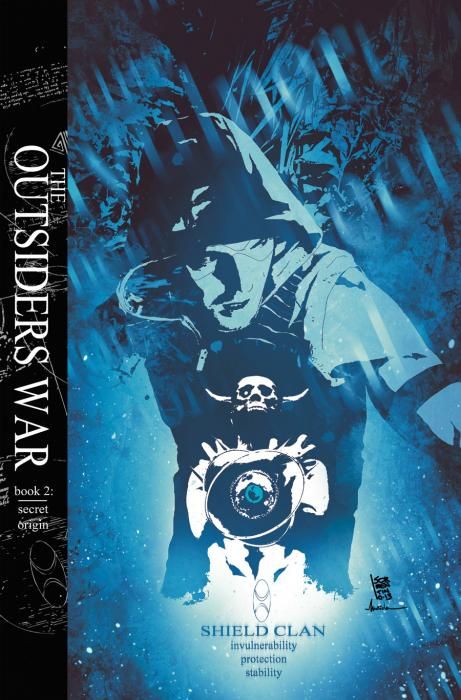Jeff Lemire and Andrea Sorrentino's run on "Green Arrow" is rapidly becoming one for the books. With each issue, their usage of the comic book medium becomes more impressive, even as they don't lose sight of their main goal: to tell interesting and engrossing stories.
Just from a writing perspective, "Green Arrow" #27 is good. I appreciate that Lemire's addressing the amazing coincidence that the arrow totem is on the same island that Green Arrow was stranded on years ago, for example, and adding Katana into the mix is a most welcome addition to the overall story. I'm enjoying the interplay between Ollie and Shado, and the reveal at the end is wonderfully timed. It's another example of how Lemire understands how to use the serialized format; instead of saving this revelation until the end of the entire saga, it's used here to focus attention and make readers look forward to the next chapter in four weeks.
But the art, oh the art -- it's once again something that could be used to teach the principles of sequential art, and how different layouts can enhance rather than detract from a story. For instance, look at the two-page spread on pages 8-9. It would have been easy for Lemire and Sorrentino to decide to just draw a big two-page splash of Ollie and Shado firing arrows. And that would have worked well enough. But look instead at what they did here, with the six rows of horizontal panels that take up most of the top of the pages. We're getting a much better feel for how many arrows are getting fired, that Ollie and Shado are whipping them out as fast as their fingers and arms can move. That's something that would have been lost with a splash, or even a normal 2-3 panel page.
Also, look at how well Sorrentino controls the perspective in those panels. With Sorrentino and Marcelo Maiolo having given Ollie and Shado each their own color, you can follow along the rows perfectly. There's never any confusion on what's happening here. And as the proverbial camera zooms in carefully on the fletching on the arrows, the pull back of the fingers on the bow string, and the launching of the arrows, we're getting a progression that your mind will fill in the gaps and turn into a smooth and graceful motion. It's a great example of how well you can get across the idea of motion in a static medium.
Don't think that the bottom half of the page is missing out on the action, too. With most of it taken up by a large image, adding inset panels whenever an arrow strikes its target also helps bring across the notion of time's passage and of movement. Each additional panel -- with the color stripped out (save for the iconic green and red for Ollie and Shado) and the little "thunk" sound effect -- makes it feel like we're seeing each arrow strike one at a time. That strategy continues onto pages 10-11, too. The diagonal tilt of some of the inset panels as Ollie is upside down helps give a slightly dizzying sense to the scene, and it also provides a stepping stone of images to guide the reader's eye from one key moment in the image to the next. Brilliant. And when Kodiak finally strikes, well, we've seen panels scatter in response to an explosion before, but I feel like Sorrentino's placement mimics an explosive pattern better than any other example I've seen.
"Green Arrow" #27 is another example of why more and more people should be buying Lemire and Sorrentino's run on the title. This is the sort of comic where sales should be going up every month, as more and more readers discover how great it is. If you aren't reading "Green Arrow" yet, trust me, give it a try. It is fantastic and then some. "Green Arrow" #27 a near-perfect comic from Lemire and Sorrentino.

